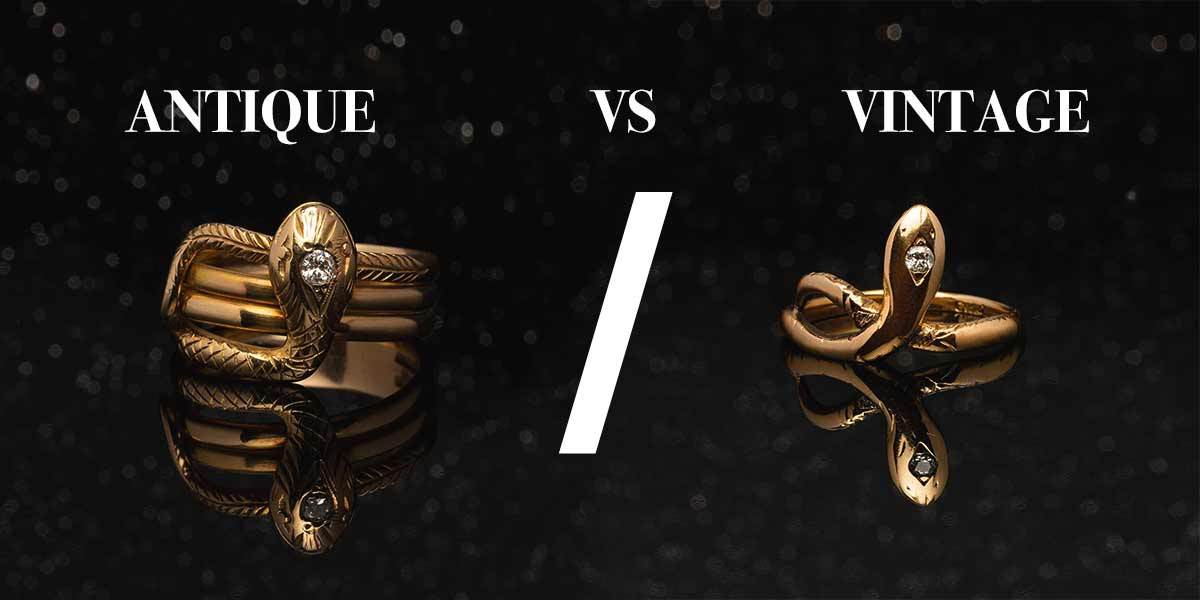Shopping for jewelry is a bit like being voluntarily hypnotized. It’s hard not to get dreamy-eyed when staring into the beautiful facets of stones and hearing the stories of their settings. To help keep your head straight when deciding if a piece is right for you, it’s helpful to be familiar with some of the terms used to describe these bewitching pieces.
 Betrothal portrait of Anne of Cleves, 1539.
Betrothal portrait of Anne of Cleves, 1539. |
Eugénie de Montijo, the last French consort. |
Defining “antique” jewelry is quite simple because it has an agreed upon definition: antique jewelry is at least 100 years old. Anything made prior to 1920 would be considered antique.
Determining what qualifies as vintage jewelry has less of a consensus across the industry; different sellers and jewelers have their own definitions. Here at The Moonstoned, we consider vintage anything made between 100 years ago, up to 20 years ago. Therefore, because this article is being published in 2020, vintage would encompass anything in the 80 years between 1920-2000.
There’s a third term worth knowing while you’re browsing. It’s not a term we use much because its definition is extremely loose, but you may see it elsewhere: “estate jewelry” refers to anything that has been previously owned, regardless of how old it is.
Identifying a piece of jewelry as vintage or antique is a great first step but doesn’t give you a ton of information about the item beyond its age. It’s kind of like identify a wine as simply white or red: knowing a wine is white doesn’t give you much indication of what to expect. Instead, if a seller suggests a wine made of the Chardonnay grape from California, you know a lot more about what is inside that bottle – including that the wine is white.
With jewelry, knowing the materials used and the era it came from is often a lot more informative than simply ‘vintage’ or ‘antique.’ For example, the Victorian Era covers anything made while Queen Victoria reigned the United Kingdom from 1837-1901. Knowing you have a diamond ring from the Victorian era, automatically means that ring is an antique.
Be wary of anything labeled Victorian “inspired” or “style” or “made in the style of.” Make sure the person selling it is forthright about when it was actually made and that they aren’t trying to pass off a piece that was commercially manufactured recently as an authentic Victorian era antique.
The best way to shop – especially online when you don’t often have the opportunity to hold a piece for yourself – is to trust the person selling it to you. An honest seller will always be open with you about what they know and what they don’t know about a piece. Here at The Moonstoned, we always provide all the information we have. If part of the item has been restored or repurposed, we will always disclose that in the text at the bottom of an item’s page.
The practice of reusing some or all of a piece of jewelry is as old as jewelry making itself. Gold and diamonds can be melted down and repurposed infinitely. In previous centuries, it was common for pieces to be taken to the family jeweler and remade completely to keep up with the fashions of the day. While we love pristine examples of their eras and preserve them whenever it feels right, we believe that jewelry should evolve with the times. What’s the point of having a beautiful Art Deco pin if you never wear pins?

If you have a sentimental or valuable piece that isn’t getting the use you think it deserves, send us an email to discuss how we can update it into something you and your family will cherish for the next 100 years. There’s nothing that feels more personal and exciting than creating your own forever heirloom to wear and past down for generations to come.



